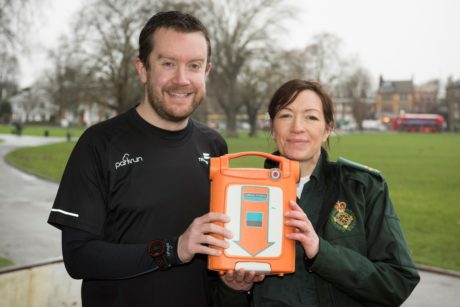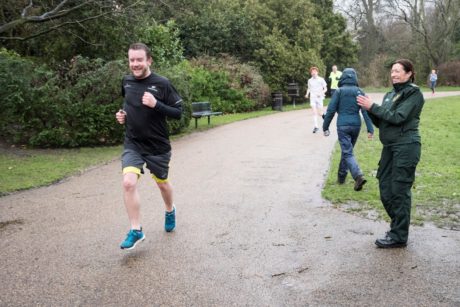January joggers to benefit from life-saving equipment in parks
A runner who suffered a cardiac arrest after a Parkrun event has raised money to buy life-saving equipment for parks across London.
 Neil Cole, 37, from Peckham, had just completed his second Parkrun on New Year’s Day 2015 when he collapsed and his heart stopped beating.
Neil Cole, 37, from Peckham, had just completed his second Parkrun on New Year’s Day 2015 when he collapsed and his heart stopped beating.
Other runners kept him alive with CPR until paramedics from London Ambulance Service used a defibrillator to shock his heart back into a normal rhythm.
Neil said: “I feel incredibly lucky that my life was saved that day. I’m massively grateful and I don’t want to waste this opportunity I have to help save other lives.”
Since recovering from his cardiac arrest, Neil has gone on to raise over £6,000 – through running – to buy eight defibrillators. It means January joggers inspired to get fit in the New Year will benefit from the devices which are being installed in parks across London.

Community Resuscitation Officer Tracy Castle, who is also a keen runner, said: “We want to encourage people to take part in Parkrun because it’s important for people to keep fit. But very rarely, and in extreme circumstances, increased physical activity can lead to a cardiac arrest.
“As a paramedic, I know parks can be difficult to access for ambulance crews – if it’s a big park, the caller might not be able to give an accurate location, and we might not be able to park near the patient. So if a park already has a defibrillator, more lives will be saved.”
Around 50 parks in London now have defibrillators – most are kept in cafes – and London Ambulance Service has helped to train people in how to use them.
The overall survival rate for someone in cardiac arrest is less than 10 per cent. If a public access defibrillator is used a cardiac patient is FIVE TIMES more likely to survive.
After his cardiac arrest, Neil was in hospital for a month. But eight months later he was running again and he is due to get married later this year.
As well as fundraising, he is passionate about raising awareness of CPR and encouraging organisations to install defibrillators. His employer UBS Bank has installed one on every floor of its building.
Neil said: “I was only 34 when this happened. I was fit and had no symptoms and no risk factors. This can happen to anyone.
“Some might feel I was unlucky but I have tried to take the positive from this. When I tell people what happened to me, it gets their attention. I can help change things.”

Follow us on social media: